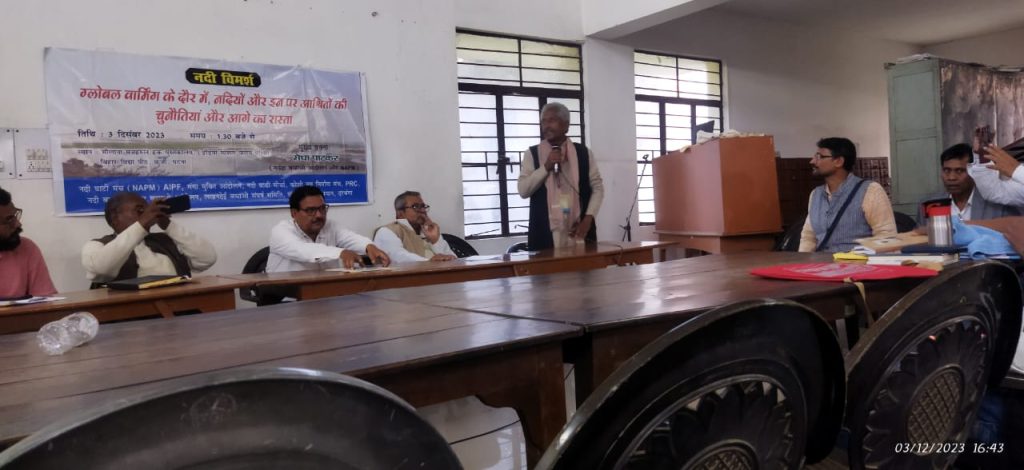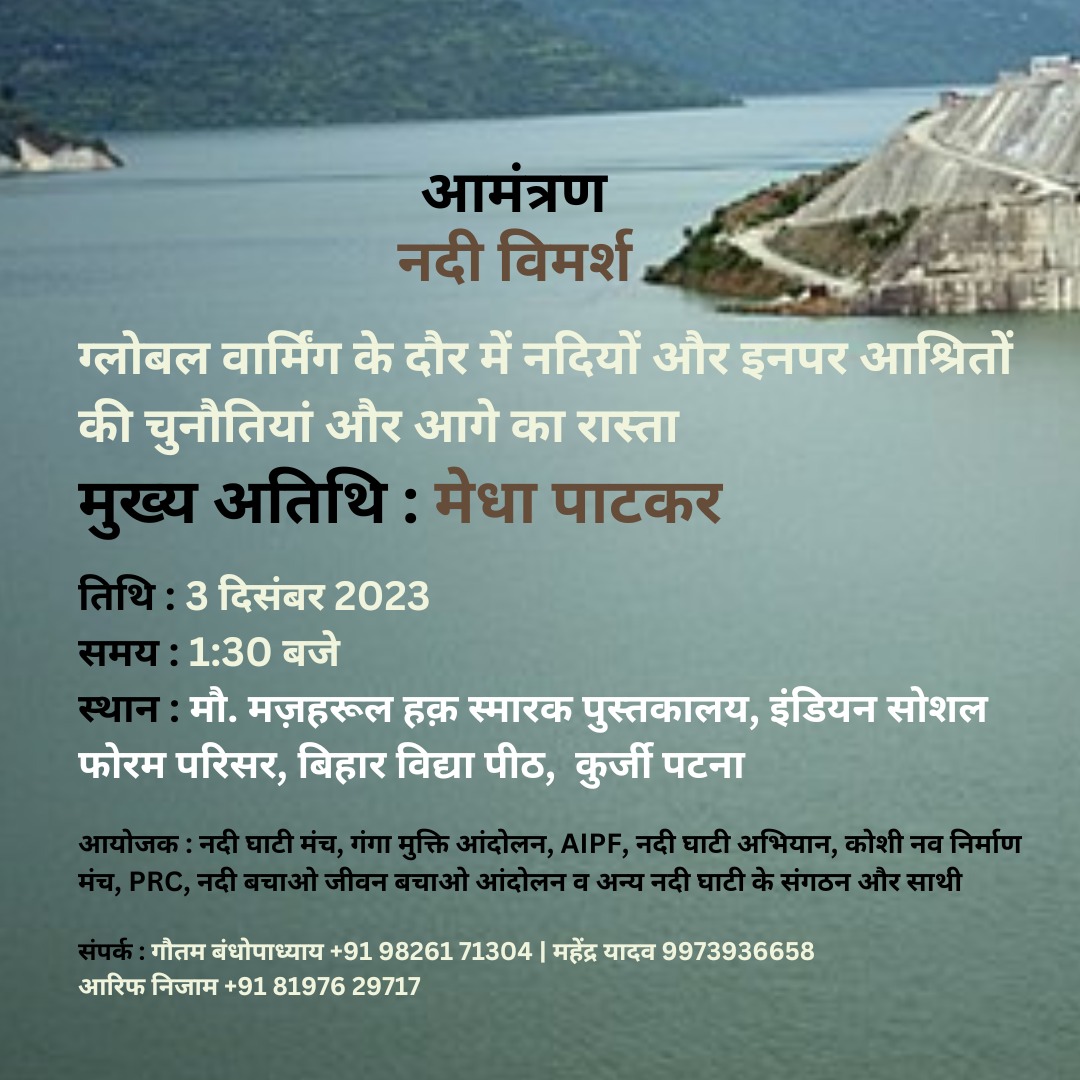Rivers have been the lifeline of cities throughout history. Most importantly, ancient cities were built on the banks of rivers due to the fertile floodplains, which were favourable for farming. Modern cities, too, are located on the banks of major rivers, including London by the Thames, Paris on the Seine, Delhi on the Yamuna and so on. Cities are also expanding, with an average growth rate of nearly half a million. Cities produce waste and garbage, which are disposed of untreated into the river. The increasing reliance of cities on the use of river water, disposal of cities’ waste and the unencumbered expansion of cities has created massive pressure on the flow and health of rivers.
Against this backdrop, the Nadi Vimarsh held at the Indian Social Forum in Patna recapitulated the effects of rapidly urbanising rivers and the importance of protecting rivers from ever-expanding cities.
The discussions highlighted that from the origin of rivers to their final fate in oceans, rivers have been encumbered by human activities. In the mountains where they originate, river flow is disturbed by the construction of dams and barrages. Colloquially called Tatbandhi, it is dangerous during the earthquake because the rivers in the India-Nepal border are prone to earthquakes.
A critical insight during the discussions was the protection and upkeep of small rivers, mainly in the form of tributaries and distributaries. Small rivers are very important for the ecosystem of rural areas for agriculture and water recharge and are increasingly at risk of extinction. An activist involved in rejuvenating an extinct small river in Bihar highlighted that small rivers are ever more critical and face insurmountable risks due to human activities, including sand mining. The activist was a significant resource person during the Lakhandehi river rejuvenation in Sitamarhi, which originated in Nepal and entered Sonbarsa in India. Chhath happens there, too.
Shrestha from Nepal discussed the colonial mindset of treating nature and rivers as a resort. This colonial mindset disconnects river/nature from people and keeps the people away from sustaining nature. Another Nepali speaker, Usha, encouraged people to initiate an India-Nepal dialogue since several rivers flow from Nepal to India.
NAPM head and Narmada Bachao Andolan activist Medha Patkar emphasised that more than natural disasters, there are human-construction-led river disasters, including the Teesta River. She highlighted that new social movements have a particular role in this attack on rivers by human activities. Social movements are also essential to mobilise the voices of marginalised groups. In addition, movements have been instrumental in providing a space for claim-making, not to mention the benefits that movements like Narmada bachao andolan provided to the people with the land, rehabilitation of 50,000 displaced people, and land for houses. Furthermore, Patkar focused her discussion on climate-change protocols shaped in international forums and argued that these protocols are usually disconnected from the lived realities, for instance, the COP28 happening in UAE.

Another critical aspect of human activities is riverfronts, a modern phenomenon aimed towards beautifying cities and channelling rivers for the voyeuristic pleasure of the middle class. People’s Resource Centre’s Research Assistant presented PRC’s works on riverfronts in different cities of India, including Musi River in Hyderabad, Tapi River in Surat, Ganga in Benaras, Mula Mutha in Pune and Khan Saraswati in Indore, which were prepared under the Nagar-Nadi fellowship. The discussion by Sidhant highlighted that riverfronts are portrayed as harmful and intended for the benefit of the people. This is where the dilemma for the riverfront begins. Riverfronts are part of urbanisation, which has implications for the urban poor. They lead to widespread demolition, displacement and dumping of construction waste into rivers. Furthermore, concerns about heritage and communal tensions also arise due to construction activities as part of riverfront construction.
The riverfronts also lead to the destruction of riverine communities. Sidhant’s discussion also highlighted the primacy of ghats as public spaces.
Meanwhile, several speakers concurred on specific moves that must be pursued strategically, such as garbage cleaning of rivers, stopping waterlogging, and planting on the floodplains.
Report prepared by Sidhant Kumar (Research Assistant).

